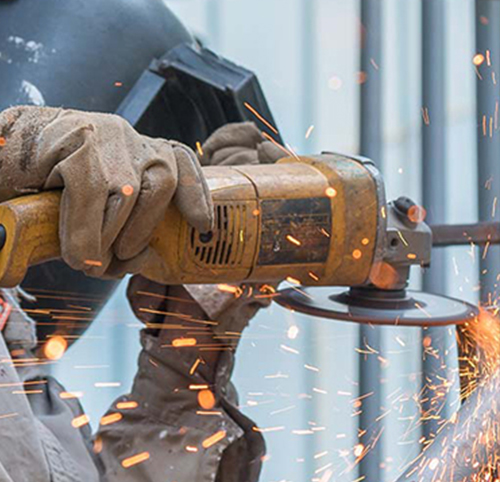How Steel Metal Fabrication Benefits the Shipbuilding Industry?

How Steel Metal Fabrication Benefits the Shipbuilding Industry?
The shipbuilding industry is a cornerstone of global trade, maritime defense, and transport. While the structural integrity of a vessel naturally garners attention, the peripheral components and accessories, often fabricated from steel, are equally critical to ensuring functionality, safety, and efficiency on board.
Steel metal fabrication is pivotal in creating these ancillary systems—such as steel laggers, piping systems, clamps, railings, brackets, and structural supports—each tailored to withstand the demanding maritime environment. The choice of steel for these components is practical and strategic, driven by a combination of material properties, cost-effectiveness, and durability.
Why Steel is the Preferred Choice in Shipbuilding Accessories?
Steel’s dominance in marine applications stems from its unique set of characteristics. It offers high tensile strength, resistance to corrosion (especially when treated), and the ability to be precisely fabricated into intricate shapes without compromising durability. These properties make steel ideal for producing both core and peripheral components.
Materials must exhibit long-term endurance in the harsh marine environment, characterized by constant exposure to saltwater, high humidity, and mechanical vibrations. Steel, especially when alloyed and coated appropriately, delivers superior resistance to these factors. Its recyclability and availability also reduce production costs and environmental sustainability, aligning with modern shipbuilding standards.
Steel Laggers: Insulating and Protecting Ship Systems
Steel laggers are a fundamental part of the ship’s insulation system. These fabricated metal casings protect thermal insulation materials around pipes, ducts, and mechanical systems. In high-temperature or refrigerated environments, laggers made from stainless or galvanized steel help maintain energy efficiency and protect crew members from accidental burns or exposure.
Due to rigidity, laggers retain shape under pressure and can be easily maintained or replaced when damaged. Their corrosion resistance ensures longevity, particularly in engine rooms or areas exposed to temperature fluctuations and condensation. Steel laggers are not only functional but also contribute to the overall safety and aesthetics of ship interiors.
Steel Pipes: The Circulatory System of Ships
Piping systems form the circulatory network aboard ships, transporting water, fuel, exhaust, and hydraulic fluids. Fabricated steel pipes—particularly those made from stainless or duplex steel—are highly favored for their strength, pressure tolerance, and rust resistance. They are extensively used in fire suppression, ballast water lines, fuel, and bilge pumping systems.
Steel piping’s reliability ensures minimal maintenance, which is vital given the difficulty of carrying out complex repairs while at sea. Furthermore, steel pipes can be custom-fabricated to exacting standards, enabling compact and efficient design layouts in confined shipboard spaces.
Clamps and Brackets: Small Components, Significant Impact
Clamps, brackets, and other fastening components are often overlooked but perform crucial roles in securing pipes, electrical conduits, and machinery. Steel fabrication allows for the production of clamps with tight tolerances and specific design parameters, ensuring a snug fit and robust support.
These accessories must withstand not just the weight of the attached equipment but also dynamic loads caused by ship movement and vibrations. Fabricated steel clamps excel in this regard due to their mechanical strength and long-term performance. Moreover, their adaptability allows shipbuilders to implement modular designs, facilitating easier upgrades or replacements.
Steel Railings: Ensuring Safety and Compliance
Safety is paramount aboard any vessel, and steel railings provide a robust solution for preventing accidents. Used extensively across decks, staircases, balconies, and engine compartments, these fabricated accessories must comply with strict international safety standards.
Steel railings are durable and can be shaped into ergonomic and aesthetic designs. Coated with anti-slip finishes and corrosion-resistant materials, they maintain their structural integrity over prolonged exposure to salt-laden air and mechanical wear.
Other Fabricated Steel Accessories in Shipbuilding
Beyond the components mentioned above, steel is also used to fabricate ladders, ventilation ducts, electrical trays, anchor chain supports, bulkhead penetrations, and storage units. These items benefit from the same advantages that make steel an ideal material: fabrication flexibility, mechanical strength, and environmental resilience.
For example, steel cable trays provide structured pathways for wiring while resisting corrosion and offering grounding capability. Similarly, fabricated steel ducts and air handlers maintain air quality and circulation in enclosed ship sections.
The reliance on steel metal fabrication for peripheral shipbuilding components is both widespread and indispensable. While the ship’s hull may symbolize strength and durability, the smaller, fabricated accessories contribute significantly to a vessel’s operational efficiency, safety, and comfort.
Steel’s unmatched blend of strength, adaptability, and resistance to harsh conditions continues to make it the material of choice in shipbuilding. The industry ensures long-term performance and compliance with international marine standards by focusing on precision-fabricated elements like laggers, pipes, clamps, and railings. This investment anchors safety and reliability at sea.
Additional Reading:

